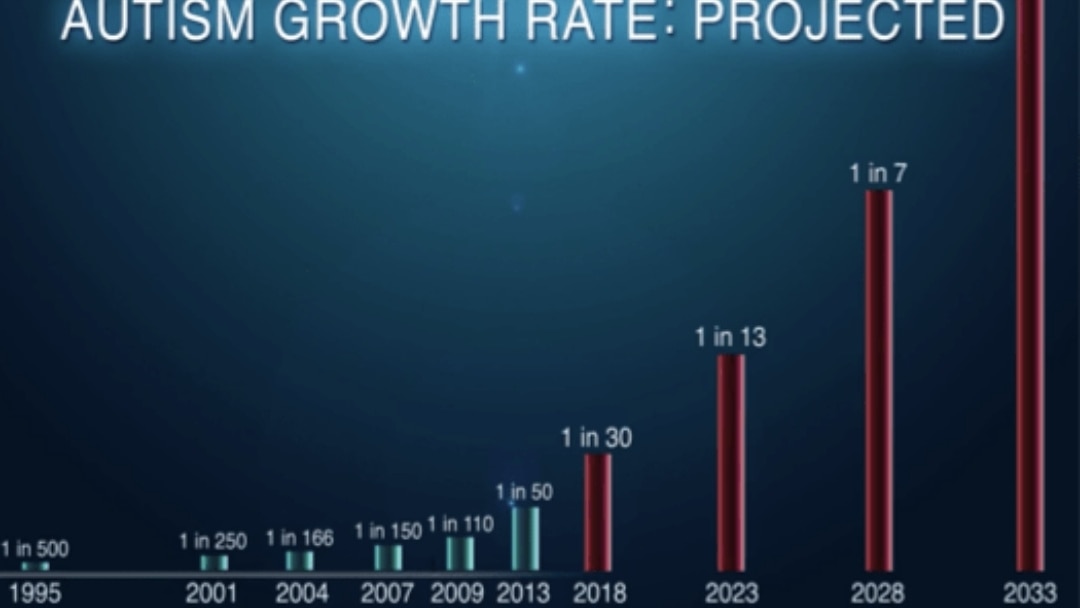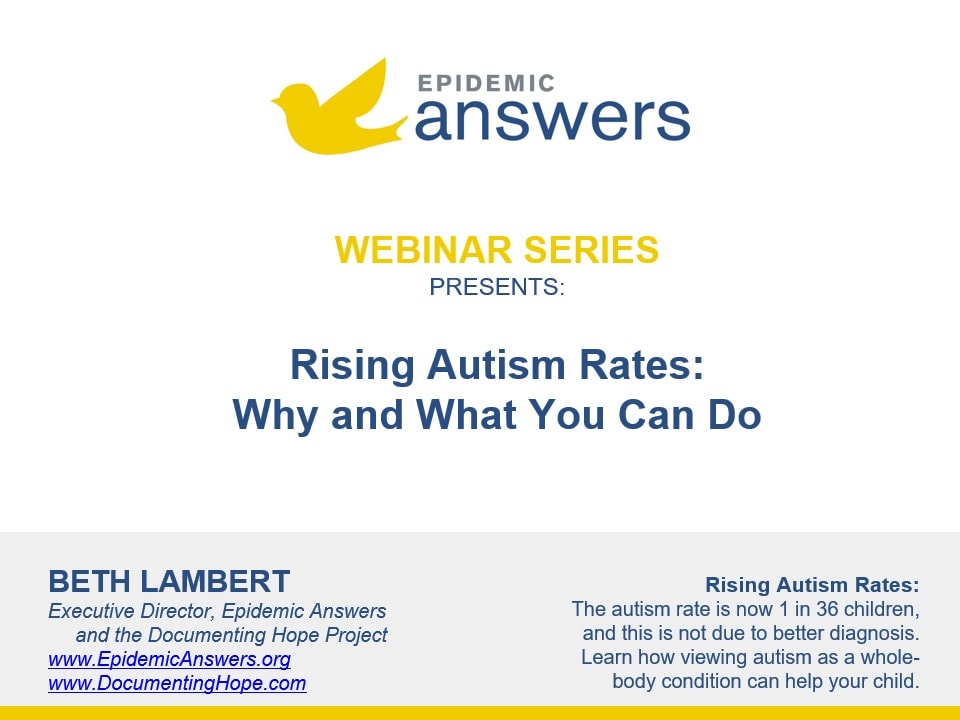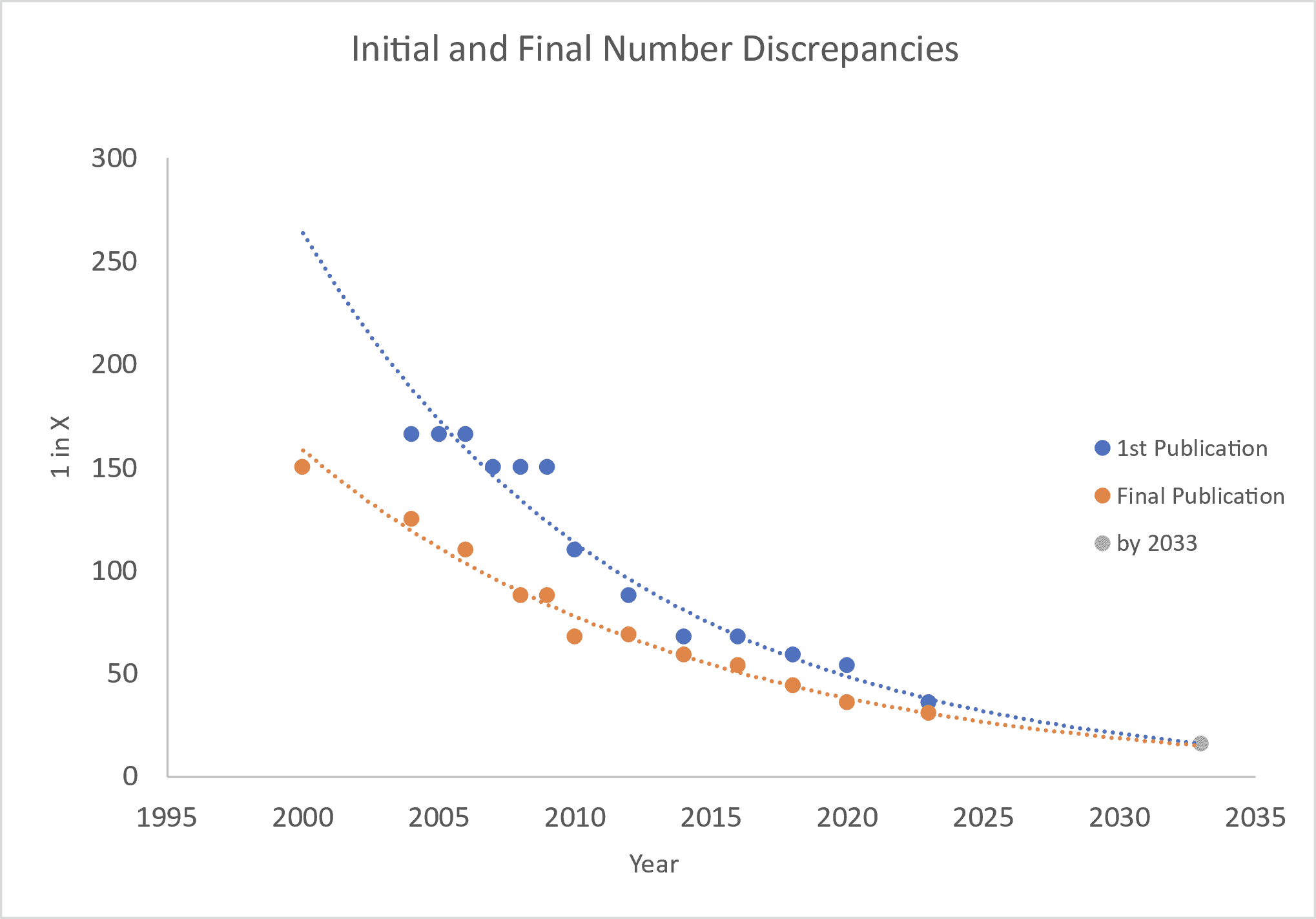Did you hear the news?
The autism rate is now believed to be 1 in 36 children.
That’s 2.8% of children.
That’s 4% of boys. And 1 in 20 boys (5%) in California.
When Epidemic Answers opened its doors in 2009, the autism rate was 1 in 150.
4-5% of boys have autism? Has it always been this way?
The autism rate just keeps growing and growing.

Here’s what the CDC has to say about it:
“We can’t say for sure, but we suspect this is due to increased awareness leading to more children being identified with autism.” –Karen Remley, M.D., M.B.A., M.P.H., FAAP, director of the Centers for Disease Control and Prevention’s (CDC’s) National Center on Birth Defects and Developmental Disabilities.
“We can’t say for sure?”
You don’t know?!
We’ve been watching the rate of autism increase dramatically since the early 1990s (that’s over 30 years!), and we still “don’t know?”
I call B.S.
We do know, we just aren’t allowed to talk about it, and when we do talk about it, we’re dismissed, gaslit, derided, villainized, blacklisted, shadow-banned, and censored.
To be sure, we ARE better at diagnosing autism due to increased awareness and due to better diagnostic tools and tracking, but it simply cannot account for the meteoric increase in children with autism since the 1980s.
If we’ve gone from 1 in 150 children in 2009 to 1 in 36 in 2023 due to better diagnosing, this means we “missed” about 1.5 million kids (or 75% of those diagnosable).
Really?!
I’m sorry, but for any parent of a child with autism, you don’t “miss” this diagnosis, especially the moderate to severe ones (“level 3 autism”), which are about 40% of cases of autism.
This is insulting to parents of children with autism.
We’re not simply better at diagnosis. We have a dramatic and frank epidemic on our hands. And what is the CDC doing about it?
Nothing. NADA. Zilch.
If the CDC, NIH, and other governmental alphabet soup organizations aren’t going to do anything about it, then it’s up to us, the parents, the children’s health advocates, the doctors and health practitioners who know what’s really happening and are helping to treat these kids in a way that will allow them be all they are meant to be.
Here is what we, at Epidemic Answers and Documenting Hope, are doing about this concerning trend.
1.) We work every day to teach parents and practitioners about the environmental and developmental “root causes” of the symptoms we call autism.
We teach parents and practitioners how to help all children thrive and overcome their most distressing symptoms and diagnoses. We offer free resources such as webinars, newsletters, educational articles, and practitioner directories. And now you can study this information intensively at our first national in-person conference in November 2023.
2.) We bring together experts from around the world to teach us what they know about healing the underlying causes of autism symptoms, so that we can share that information with you, the parents and providers who need this vital information.
3.) We are independently funding and running two IRB-approved research studies that are looking at:
- What in the environment might be contributing to the rise in autism?
- What does it take to heal our affected kids?
4.) We just built an online community for parents to connect and learn how to heal their children. It’s called Healing Together, and we’ll be bringing it live soon! Stay tuned!
We can and will do more.
And we need your help.
If you like what we’re doing and you want to support us in helping more families heal from the symptoms of autism and more, please make a tax-deductible donation today. Your donation helps real families get on the road to vibrant health.
It’s up to us.
Our kids don’t have time to wait.
Thank you for your continued support of this important work for children’s health.
Let’s do this thing.
Beth Lambert, Founder and Executive Director
P.S. If you want your friends and families to feel the urgency of this situation the way you and I do, share this video with them.
About Beth Lambert
Beth Lambert is a former healthcare consultant and teacher. As a consultant, she worked with pharmaceutical, medical device, diagnostic and other health care companies to evaluate industry trends.
She is the author of A Compromised Generation: The Epidemic of Chronic Illness in America’s Children (Sentient Publications, 2010). She is also a co-author of Epidemic Answers’ Brain Under Attack: A Resource for Parents and Caregivers of Children with PANS, PANDAS, and Autoimmune Encephalitis.
In 2009, Beth founded Epidemic Answers and currently serves as Executive Director. Beth attended Oxford University and graduated from Williams College and holds a Masters Degree in American Studies from Fairfield University.

Still Looking for Answers?
Visit the Epidemic Answers Practitioner Directory to find a practitioner near you.
Join us inside our online membership community for parents, Healing Together, where you’ll find even more healing resources, expert guidance, and a community to support you every step of your child’s healing journey.
Sources & References
Blaxill, Mark, et al. Autism Tsunami: the Impact of Rising Prevalence on the Societal Cost of Autism in the United States. J Autism Dev Disord. 2022 Jun;52(6):2627-2643.
Carey, Benedict. Study Puts Rate of Autism at 1 in 150 U.S. Children. The New York Times, 9 Feb 2007.
Centers for Disease Control and Prevention. Data & Statistics on Autism Spectrum Disorder. Accessed 4 Apr 2023.
Centers for Disease Control and Prevention. Prevalence and Characteristics of Autism Spectrum Disorder Among Children Aged 8 Years — Autism and Developmental Disabilities Monitoring Network, 11 Sites, United States, 2020. Accessed 24 Mar 2023.
Hertz-Picciotto, I., et al. The rise in autism and the role of age at diagnosis. Epidemiology. 2009 Jan;20(1):84-90.
Li, Q., et al. Prevalence of Autism Spectrum Disorder Among Children and Adolescents in the United States From 2019 to 2020. JAMA Pediatr. 2022 Sep 1;176(9):943-945.
Maenner, M.J., et al. Prevalence and Characteristics of Autism Spectrum Disorder Among Children Aged 8 Years – Autism and Developmental Disabilities Monitoring Network, 11 Sites, United States, 2018. MMWR Surveill Summ. 2021 Dec 3;70(11):1-16.
Rosen, N.E., et al. The Diagnosis of Autism: From Kanner to DSM-III to DSM-5 and Beyond. J Autism Dev Disord. 2021; 51(12): 4253–4270.
Treffert, D.A. Epidemiology of Infantile Autism. Arch Gen Psychiatry. 1970;22(5):431-438.
Waterhouse, L. Autism overflows: increasing prevalence and proliferating theories. Neuropsychol Rev. 2008 Dec;18(4):273-86.




